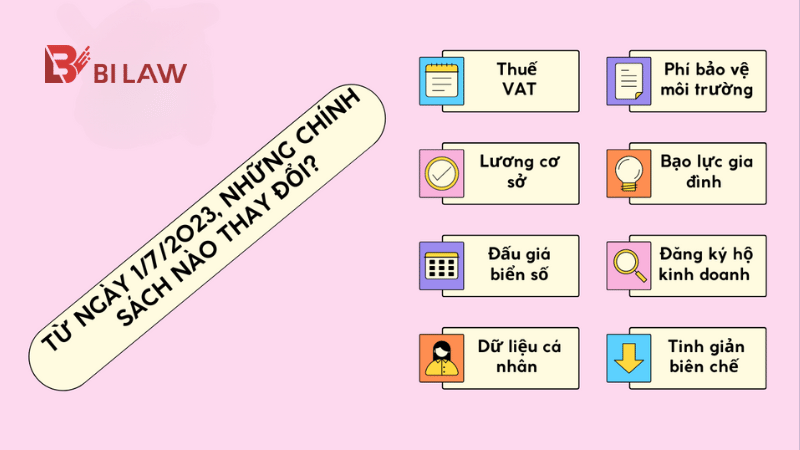The recent mass layoff situation has become a hot story on forums around the world. In the US, many large technology companies have conducted mass layoffs in recent months. Most recently, Meta, the company of Facebook, announced a reduction of more than 13% of its staff, or more than 11,000 employees. Next is Twitter, shortly after the takeover of billionaire Elon Musk, nearly half of the 7,500 employees were laid off.
Most recently, Amazon, they are planning the largest staff reduction in history with an expected number of nearly 10,000 people.
Inflation, loss, cost reduction are the explanations that businesses give when asked about the reasons for the decision to lay off a large number of employees. However, the decision to lay off mass must be put on the scale to calculate and consider carefully, because, after each decision, there are potential legal risks that enterprises face, the possibility of lawsuits and the obligation to compensate employees due to dismissal acts contrary to the labor law.
Legal framework governing mass layoffs under US law
Since the late 19th century, the theory of “at-will” has been born based on the assumption that the parties have the right to freely enter into agreements on labor trade and has gradually become a widely applied doctrine. variable in all US states (except Montana).
In the United States, most workers work on an “at-will” contract. As its name implies, “at-will” means that the employer can arbitrarily modify and change the terms of the labor contract without prior notice or approval of the employer (eg reduction in wages, benefits, change in working hours, etc.). More importantly, the employer will be entitled to terminate the employment contract with the employee at any time and for any reason without liability, except in certain cases. if the termination is related to discrimination based on race, religion, gender, etc. Thus, it can be seen that the employer has a very strong right to fire the employee (note terminology “fire” here is understood as “laid off” – termination of the labor contract through no fault of the employee, not fired because the employee violates labor discipline).
For that reason, the Worker Adjustment and Retraining Notification Act (“WARN Act”) is a federal law designed to protect workers from the negative effects of job loss suddenly. In principle, the WARN Act will be activated in case the employer conducts mass layoffs (the employer employs 100 or more full-time employees, excluding those with less than 6 months of employment or average working hours less than 20 hours/week).
Mass layoffs are understood as when at least 50 employees are laid off within a 30-day period and the number of laid-off employees accounts for at least one-third of the total number of employees of the employer; or 500 employees (not needing to make up at least one – third of the total number of employees) are laid off within a 30-day period; or in case the entire workplace is closed and at least 50 employees are laid off within a 30-day period. As required by the WARN Act, employers are obligated to give workers 60 days notice prior to formal mass layoffs. In addition, the employer must also notify the State Unemployment Support Center to take measures to help these workers.
The requirements for prior notice obligations under the federal WARN Act are specified in each state’s labor laws. In the case of Twitter, US law allows the labor laws of the state of California (where Twitter is based) to apply. Accordingly, all enterprises with a size of 75 employees or more, in case of dismissal of 50 employees or more within 03 days, must notify employees at least 60 days before the official dismissal.
In the event of a breach of the foregoing notice period obligation, the employer must pay the employee an amount equivalent to the salary the employee would have been entitled to (back pay) and other benefits corresponding to the number of days without prior notice by the employer (up to 60 days). In addition, the violating employer can also be fined up to 500 USD for each day of violation for each employee.
At Twitter, most employees work on an “at-will” contract. Elon Musk, the new boss of Twitter, absolutely has the right to layoffs any employee, at any time, for any reason, as long as he does not choose who to leave or stay based on reasons protected by law. The privilege of Elon Musk has been formed from the moment Twitter and employees signed a labor contract containing an at-will clause.
However, it should be noted that, under the provisions of the WARN Act, before conducting mass layoffs of thousands of people, Twitter is obliged to give 60 days notice to employees. Currently, Twitter employees believe that Twitter has not implemented adequate notice according to regulations. If Twitter does indeed violate this provision, the liability to compensate under the WARN Act is the legal consequence that it is likely to suffer.
Fire employees according to Vietnamese law – be careful because of unpredictable legal risks
The term “mass dismissal” does not exist in the Vietnamese labor law system, instead, two cases can be classified in which the employer is entitled to terminate the labor contract with the employee. One is the employer who exercises the right to unilaterally terminate the labor contract, and the other is the employer who takes disciplinary action against the employee in the form of dismissal.
The term “dismissal” is only used in the case of handling violations of labor discipline of employees, applied to individuals, while unilateral termination of labor contracts with many people can be found in the following cases enterprises change their structure, technology, or are affected by the epidemic.
In the event that the employer wishes to unilaterally terminate the employment contract with the employee, the employer must first consider whether the termination is within the legal framework. The reason for termination may come from the fault of the employee, such as frequently not completing the work, voluntarily quitting without a good reason, or from the employer, such as the enterprise structural change, technology. The employer must also comply with the obligation to notify the employee in advance, at least 03 working days to 45 calendar days depending on the type of labor contract (except for some exceptional cases). Notifying employees in advance is considered reasonable for employees to prepare mentally and actively arrange work or find new jobs.
The law is more stringent in the case of dismissal of employees. The employer may only apply the highest form of labor discipline to the employee if there are grounds to prove that the employee’s fault is related to the violations prescribed in the labor law and the employer’s labor rules (which have been registered with the competent State agency and validly promulgated). Employers must strictly comply with the order of labor law, labor regulations as well as relevant internal documents of the enterprise (if any); labor discipline must be carried out within the statute of limitations to be handled; the meeting on handling of labor discipline must be attended by the employee’s representative organization at the establishment of which the employee being disciplined is a member; the person competent to handle labor discipline must be the person competent to enter into a labor contract on the employer’s side or the person specified in the labor regulations. In addition, if the employee falls into one of the special cases that are protected by the labor law, the employer will not be able to unilaterally terminate the labor contract or dismiss it.
In general, the termination of the labor relationship from the employer’s side is only considered legal when the employer ensures both necessary and sufficient conditions: the reason for the termination of the labor contract must be in accordance with the provisions of the labor law and the termination must comply with the legal process and procedures. If either of these conditions is missing, the unilateral termination of the labor contract or the dismissal of the employer is likely to be considered illegal by the dispute settlement body. At this time, the employer must accept the employee back to work under the signed labor contract (if the labor contract is still valid), pay wages, and pay compulsory insurance for the employee during the days when the employee is not allowed to work; pay salary corresponding to the unannounced days and must pay extra to the employee an amount of at least 02 months’ salary according to the labor contract.
It can be seen that the departure of senior employees of enterprises in the United States can also happen very quickly. However, this is almost impossible in Vietnam when the labor law is much stricter in terms of dismissing or unilaterally terminating labor contracts with employees. The practice of dispute resolution in Vietnamese jurisdictions also shows that the application of principles in favor of workers is always appreciated, not just theory. Therefore, for senior personnel, enterprises in Vietnam often give priority to the negotiation solution in order to convince the employee to sign an agreement to terminate the labor contract and compensate a certain amount of money for the employee can leave as well as not creating a precedent for the employer to unilaterally terminate the labor contract with the employee. Meanwhile, in the United States, employers can ask employees to leave their offices at any time, regardless of the risk of going to court or paying damages later.
[1] Article 20, Chapter V, Article 639.1 of the WARN Act
[2] Articles 1401(a), 1400(a), (d) California Labor Code
[3] Article 2104(a), WARN Act
[4] Article 1402(a), (b), Article 1403 of the California Labor Code
[5] Article 124.4, Labor Code 2019
[6] Article 36.1, Labor Code 2019
[7] Article 125, Labor Code 2019
[8] Article 37, Labor Code 2019
[9] Article 41.1, Labor Code 2019


 Tiếng Việt
Tiếng Việt 中文 (中国)
中文 (中国) 日本語
日本語 한국어
한국어









